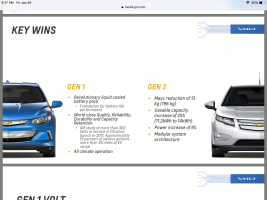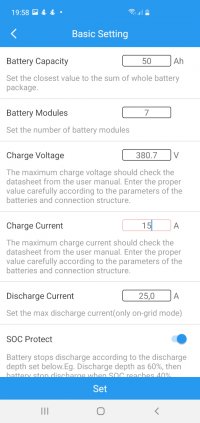@powertrack,
I've just checked your project thread (with Google translate), and I'm impressed. That is real hardware with all that power electronics and big Leaf battery. I was thinking about such an approach but then decide to go Goodwe hybrid inverter. It's a pretty good device and indeed has all features for the HV energy storage system.
I agree with you a CAN Converter/Gateway is a core component in these projects. The current solution (Raspberry Pi) is somewhat too complicated, and I'm not sure about its long term reliability. But it's making hacking and debugging a lot easier. I'm planning to make an embedded device (MCU-based) and replace it, but this will take some time.
BYD HV System is an intriguing device supported by many inverters. I have to check how Fronius Symo talks to it, whether CAN bus or MODBUS.
@Cheap 4-life,
I took the battery from a local dealer of used Chevy Volt cars. (located in Bulgaria, Europe). It's from a 2012 car and was staying unused for a long time. I've checked it and found two dead cells (zero voltage). Other cells showed a capacity of around 38.5Ah from the original 45Ah.
I've tested cells with iCharger B208 according to datasheet limits from 4.15V to 3.0V. So the numbers that I gave in my previous post are real-life data, not estimate. Now I'm using 94 of 96 cells, which equals the maximum available capacity of 13.4kWh. Let say that I go with 80% DOD that is 10,7kWh usable capacity from the inverter.
I've just checked your project thread (with Google translate), and I'm impressed. That is real hardware with all that power electronics and big Leaf battery. I was thinking about such an approach but then decide to go Goodwe hybrid inverter. It's a pretty good device and indeed has all features for the HV energy storage system.
I agree with you a CAN Converter/Gateway is a core component in these projects. The current solution (Raspberry Pi) is somewhat too complicated, and I'm not sure about its long term reliability. But it's making hacking and debugging a lot easier. I'm planning to make an embedded device (MCU-based) and replace it, but this will take some time.
BYD HV System is an intriguing device supported by many inverters. I have to check how Fronius Symo talks to it, whether CAN bus or MODBUS.
@Cheap 4-life,
I took the battery from a local dealer of used Chevy Volt cars. (located in Bulgaria, Europe). It's from a 2012 car and was staying unused for a long time. I've checked it and found two dead cells (zero voltage). Other cells showed a capacity of around 38.5Ah from the original 45Ah.
I've tested cells with iCharger B208 according to datasheet limits from 4.15V to 3.0V. So the numbers that I gave in my previous post are real-life data, not estimate. Now I'm using 94 of 96 cells, which equals the maximum available capacity of 13.4kWh. Let say that I go with 80% DOD that is 10,7kWh usable capacity from the inverter.
Last edited:











